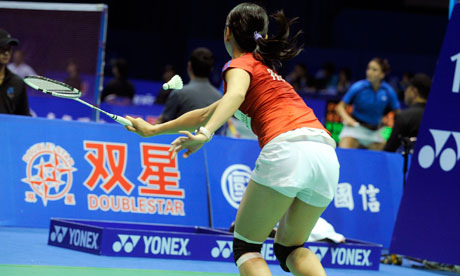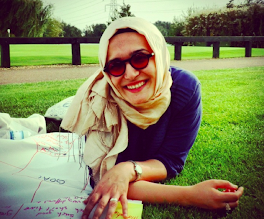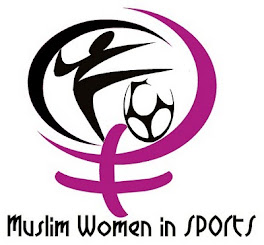By Sudhiti Naskar
Twins Shakila and Sanno Singh challenge a conservative, male-dominated society and traditional expectations in India with every fist they throw in the boxing ring. The Muslim 20-year-olds tell Sudhiti Naskar of their hopes and dreams, and of beating the odds thus far. Photographs by Arindam Mukherjee
 |
| Sanno Singh, left, and twin Shakila -Photo by Arindam Mukherjee |
A gold medal normally bestows distinction on its illustrious winner.
But when given to a female Muslim boxer in India, it becomes less of a trophy and more of a talisman for future glory beyond the sporting world.
For Shakila Singh, 20, is more than a boxing champion. With her twin sister, Sanno, she is fighting for her freedom to compete in a man's world.
Today, they are among the most promising female boxers from the state of West Bengal, and their success has brought them to the attention of Bollywood and the media.
But the fight has not been easy.
The girls - known as Chotee and Baree (Hindi for "the younger" and "the elder") - grew up and live in Ekbalpore, an impoverished Muslim ghetto in south-west Kolkata. It is not a place where females are encouraged to deviate from their domestic destiny. However, the girls have become famous (or infamous) in the region for overturning traditional expectations in a conservative society.
Their late father, SK Singh, did everything in his power to stop them. He beat them, starved them, scolded them and locked them up to wean them off boxing.
"Father threw his sandal at Chotee," says Sanno, referring to her twin born a few minutes after her. "We had been nagging for his permission since we were small so we could start training as boxers. Some boys in our locality used to practise boxing in a playground close to our home. We picked up our interest for the game from there. But father felt that boxing was a man's game and girls should stay away from it. We had not seen him so angry. We fell silent and were too scared to disobey him. It felt like an end to our dream of boxing. But Allah had other plans, I guess. We are still in the game."
 |
| Photo by Arindam Mukherjee |
The fact that they are is a testament to the tireless efforts of their mother, Begum, who defied her husband to furtively support their daughters' passion, hiding their boxing gloves in their schoolbags so they could train after school at the South Calcutta Physical Cultural Association near their home.
Sitting on the only bed in their house, she says: "I felt it was unfair to stop the girls, especially when they loved the sport so much. I gave them permission to train but did not let my husband know."
An imposing woman who rarely smiles, Begum was born into a conservative family and had nursed a strong liking for wrestling in her heart. She grew up admiring her father - a noted pehelwan (Hindi for "wrestler") in his time.
"I secretly wished I could someday become as strong and powerful as him," says Begum. She also wanted to play with the boys, which would anger her mother, who would chide her for what she thought was wayward behaviour.
So when Begum's husband began to chastise the girls, she made up her mind that her daughters would follow their dream. But it was a fight that was always going to go a few rounds with the opposition, which included friends and relatives who now dote on the twins.
The girls' father was a former Hindu who converted to Islam, and a Kolkata police officer. He did his utmost to stop them, as did religious leaders from local mosques who claimed it was un-Islamic for the girls to learn to box, as they would have to wear shorts during matches. Friends and relatives told the twins' parents that no one would marry the girls if their noses were broken or their teeth were knocked out.
Singh died a decade ago after suffering from paralysis and diabetes, and the girls wept. However, his death changed their lives in more ways than one. Shakila, who was born with a hearing and speech impediment, was jolted out of her disability-induced silence by the shock of his death. She spoke for the first time at the age of 10.
Their father's death meant the girls could embrace the sport openly. Every day, they follow a tough training schedule. They wake up at 4.30am, catch a bus to Victoria Memorial and sprint and shadowbox in its lush gardens for two hours. At the end of the session they return home, eat and rest before preparing for their afternoon training at the Sports Authority of India campus in Salt Lake.
They train with their coach, Sujay Guha, and spar with boys of the same weight. There is no gender-based discrimination inside the ring. Once a bout is over Shakila leans back on the ropes with beads of sweat running down her cheeks. With her frame heaving in small gasps she looks like a lioness.
Such exertion wears the girls out. Shakila, who stands 5 feet 4 inches and weighs 11 stone 11 pounds, and Sanno, 5ft 5in and 13 pounds lighter, need a rich intake of protein to stay fit. Their mother ensures they get to eat chicken at least once a day although the family is of limited means.
Under the same roof with the girls and their mother live Begum's eldest son and his wife and their five children.
Their house is on one of the many narrow alleys that run through a ghetto littered with rubbish pits and open drains. There is no kitchen, so cooking is managed around a small passage next to the entrance. The 10.2 sq m room used as both living room and bedroom has posters of Mecca and other religious places neatly hung on its bright, blue walls. The next room is treated as a storeroom and a prayer room.
 |
| Photo by Arindam Mukherjee |
The twins perform namaz here five times a day. They fast during Ramadan, and although training on an empty stomach makes them dizzy, they don't like to skip on practice. Their traditional upbringing is a major influence on their lives, and they listen to their mother without question. In many respects, their lives are not so different from those of the other neighbourhood girls. But their wish to box speaks volumes about their free will in a society that is largely male-dominated and an environment in which women are marginalised.
There are now about 200 female boxers in India, and the Muslim communities of West Bengal contribute about 55 per cent of the total. This would have been unthinkable 10 years ago. However, the twins' boxing club president, Asit Bannerjee, began to campaign for women's participation in the sport at a meeting of the Indian Boxing Federation in 1998. Other members opposed his idea, claiming it was against Indian culture for women to box, and that they were physically and psychologically weak. Two years later, women's boxing started on a national level, with divisions in junior, sub-junior, senior and youth levels.
Bannerjee, 66, has been a major influence on the twins. In 2007, Shakila won a gold medal in an international boxing championship in Turkey. The tournament, run by the Geneva-based Amateur International Boxing Association, was one of several now being held to promote junior competitors and give them experience. Shakila competed as a light flyweight and knocked out her foe from the host country.
The twins have fought in about 10 tournaments at the national and state levels and many more at the interclub level. Shakila was a runner-up in one national championship held in Agra, and in an interclub championship in Kolkata. She also knocked out a 6ft-tall opponent in five seconds at the Indian Amateur Boxing Federation's National Championship in 2006. Sanno has yet to reach a final.
"In the coming years, they will be champions in the state and national level," says Guha, the twins' coach.
The twins consider Bannerjee their mentor. He has been instrumental in turning them into serious sportswomen. He also told them about The now-retired boxer Laila Ali, the daughter of Muhammad Ali.
"If she can, you can too," he would tell the girls. "Be focused, work hard."
In reality, Banerjee has carried out a social experiment in these ghettos, by bringing together men and women, Hindus and Muslims, to boxing. As they pack punches and rub shoulders inside the ring, social and religious prejudices appear to crumble.
Now Ekbalpore community leaders organise women's boxing championships. At one such event, the smiling sisters are transformed into tough-looking boxers, keen eyes flashing. Sanno employs the outfight method in which the punches are thrown from a distance. Shakila, who has smaller hands and a lesser reach, uses the in-fight technique, in which she comes closer to her opponents. The two have fought each other, with Shakila having a slight edge.
As Sanno steps into the ring, an uproar of cheers comes from the crowd of mostly men. Her female fans crane their necks to watch. As she throws powerful and precise punches, her opponent gives in. The crowd goes wild.
The twins' family bears the brunt of their expenses. Their equipment is mostly donated by private sponsors, and coaches and clubs do not take a fee. The twins hope to land jobs eventually in the police force or railway management. Neither has a boyfriend; their conservative background renders it almost impossible for them to have a romantic relationship before they are married.
"We do think about jobs and money, because we are not rich," says Sanno, "but at the end of the day it's the sport that matters. For us boxing is a passion."
Adds Shakila: "Yes, starve me for a day I can manage, but stop my game and I will die."
Man on a mission
Asit Banerjee is helping to change the attitude in India towards women in male-dominated sports, especially boxing.
Banerjee, 66, the president of the South Calcutta Physical Cultural Association, near the home of Sanno and Shakila Singh, declares himself to be a disciple of the 19th-century philosopher Swami Vivekananda, who preached female empowerment.
"I believe women are stronger than men because they go through the pain of giving birth," says Banerjee. "A man cannot possibly imagine how strong a person needs to be to sustain that kind of pain. When women will realise their power, the face of Earth will change forever.
"This is why I went to the Muslim-dominated ghettos of Khidderpur, Ekbalpore, Mominpur and Metiaburz to discover spirited girls. These poor Muslim girls have a killer instinct - a kind of spunk - needed for the sport. I had a hope that these girls could begin a women's era in the boxing circle of India."
And a women's era outside of it, too.
"I am not trying to create a bunch of pro-boxing women," he says. "Boxing is just an excuse. I believe through boxing I can help liberate these women from the prejudices and restrictions society imposes on them. I want to produce strong women who can be strong mothers. A nation can never prosper if it produces weak women."
It has been an uphill task for Banerjee, an upper-caste Hindu, to persuade Muslim parents to let their children, male or female, to box. Some Urdu newspapers called him a Hindu conspirator and an infidel. How sweet it was, then, when one of his ace boxers, Mohammed Ali Qamar, won a light-flyweight gold medal at the 2002 Commonwealth Games. This victory gave Banerjee the credibility he needed.
After this, he went from door-to-door to seek female women boxers such as the Singh twins.
"Your blood is no different from Qamar's," he would tell girls. "Now it's Qamar's sisters' turn to storm the ring."
More than a few girls heard him in Ekbalpore and its neighbouring Muslim ghettos, which now churn out female boxers like never before.
On film
The Singh twins' journey has been chronicled in a 30-minute Bollywood documentary, India's Million Dollar Babies. Shot in Ekbalpore, its surroundings and the gardens of Victoria Memorial, it examines the religious and cultural hurdles they have met to become the redoubtable competitors they are. Inspired by the Oscar-winning Clint Eastwood film about a female boxer, Million Dollar Baby, it was made by the director Jay Singh (who is no relation).
Source:













